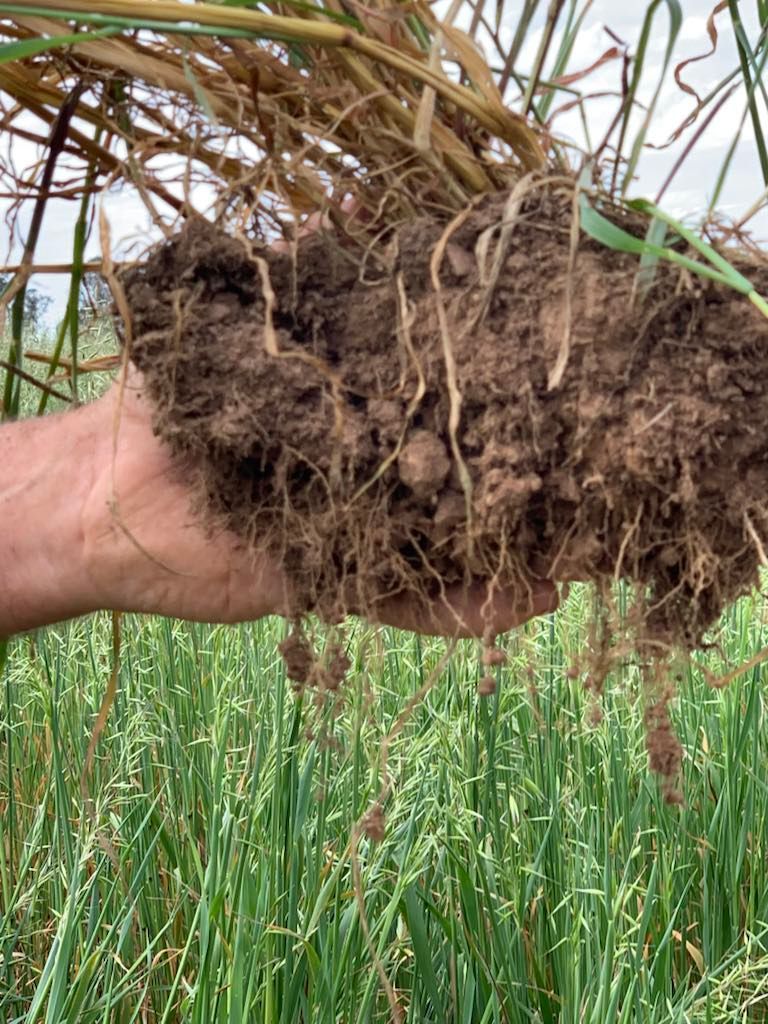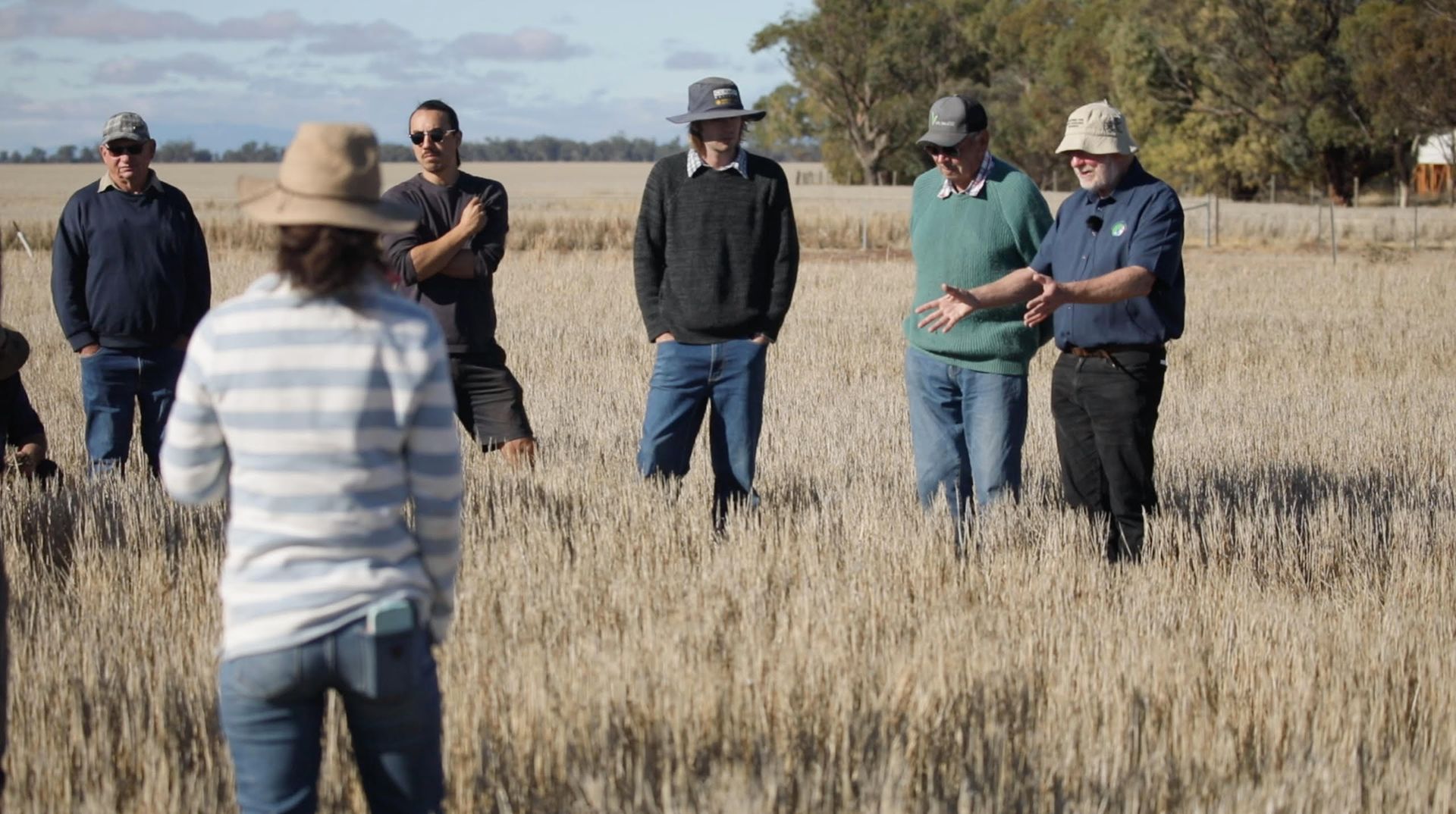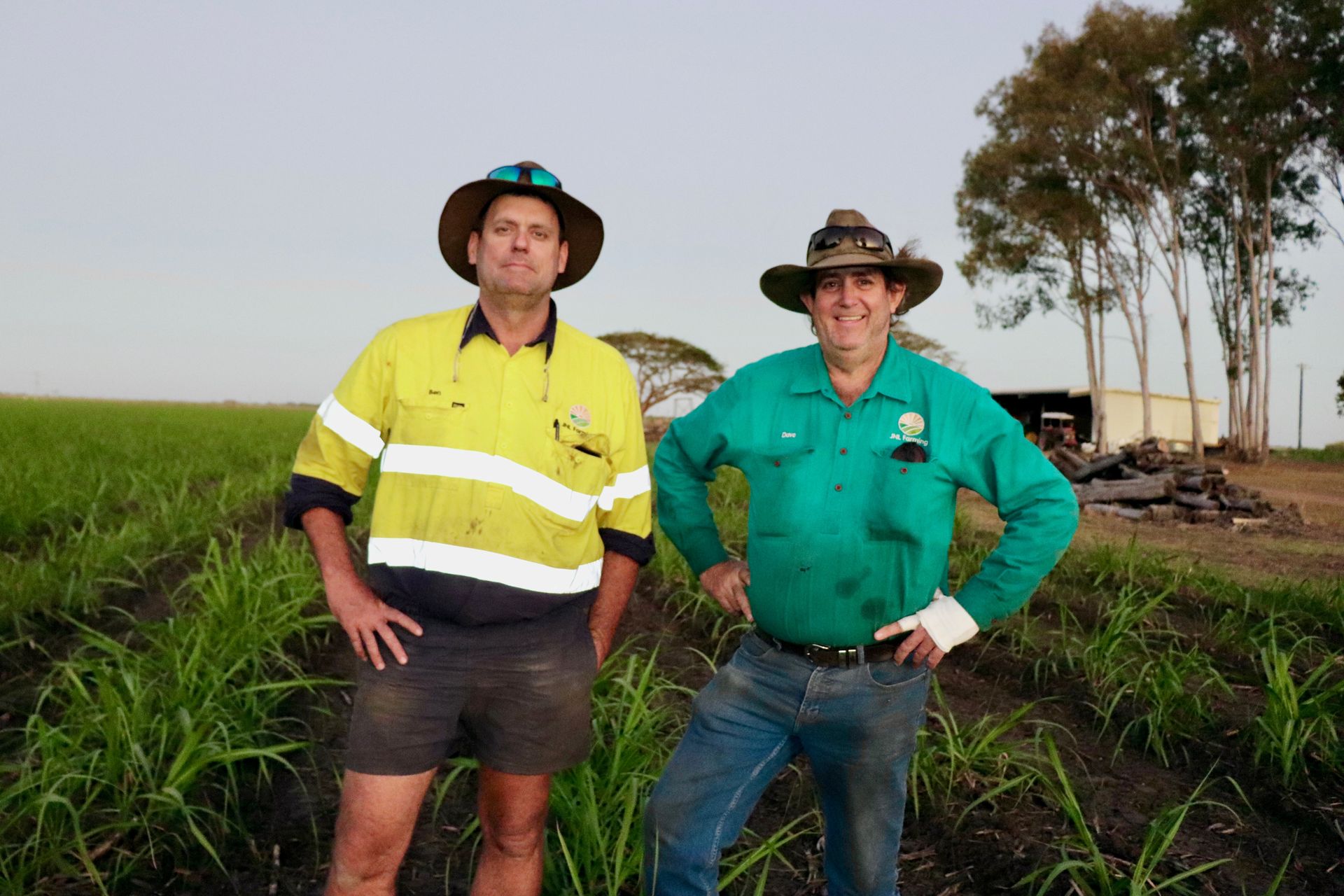Cindy Eiritz is cofounder of non-profit Regenerate Earth. They grow soils, communities, and futures through consultancy, education, and advocacy.
How building soil and vegetation health helps weather climate extremes
From drought to deluge, healthy soil and vegetation systems reduce risk, cut costs, and sustain land, livelihood and legacy.

(Photo Phill Lee)
Agriculture is and will increasingly be impacted by climate extremes: storms, wind, floods, frosts, drought, aridification and wildfires.
The result? Resilience isn't just a buzzword - it's a necessity. With our variable climate, rising input costs, and the need to do more with less, many are turning their attention to what they can control: the health of their soils and vegetation.
Producers are rediscovering that resilient land leads to resilient business. Healthy soils store more water, support stronger plants, and buffer farms against drought and flood. These practices are proving to be both sound economic decisions vital for the long-term viability. Their value is often most evident in challenging years.
Healthy soil is more than just dirt underfoot. It’s a living, breathing ecosystem teeming with microbes, fungi, and organic matter that supports the entire farm system. When managed with care, soil acts like a sponge - soaking up rainfall, storing nutrients, and feeding plants more efficiently.
At the same time, thriving vegetation protects that soil, cools the surface, and reduces erosion by allowing increased water infiltration and dramatically reducing soil movement when runoff does occur.
Grazing for Groundcover
In Australia’s pastures and rangelands, groundcover is gold. Graziers from The Kimberley to the NSW South Coast are using a scientific understanding of the symbiotic relationship between grazing animals, plants and soils to increase plant diversity and maintain perennial cover. The results? Fewer bare patches, deeper root systems, better rainfall infiltration, and more grazing days per hectare - even during tough seasons.
Beyond pasture health, these methods also improve livestock performance by ensuring more consistent forage availability. Holistic planned grazing allows producers to adapt paddock use to rainfall and plant growth, while building long-term landscape function—converting excess growth into fertility rather than letting it go to waste or burn off in dry spells.
Building Cropping System Resilience
In broadacre cropping, it’s a similar story. Stubble retention, cover crops, increased diversity, and reduced tillage are helping soils retain moisture, reduce evaporation, and support soil biology and steadily rebuild soil organic matter. Croppers in the Western Australia wheatbelt and New South Wales central west are seeing their topsoil improve year by year, while also reducing the need for synthetic fertilisers and other inputs.
Cover cropping, in particular, is growing in popularity. It offers benefits for both soil health and business economics - improving structure, preventing erosion, adding biomass, and creating a buffer.
Horticulture and Microclimate Management
In horticulture, resilience is often about protecting permanent plantings from heat stress and erratic water availability. Growers in South Australia’s Riverland, Lockyer Valley in South-East Queensland, and northern Victoria are using composts, mulch, inter-row plantings and living groundcovers to maintain cooler soils and build a more consistent root zone environment. These approaches support crop health, reduce disease pressure, and improve water use efficiency.
Economic Benefits of Soil Resilience
Crucially, these strategies are not one-size-fits-all. Every farm has different conditions, but the principles of maintaining cover, building organic matter, and supporting microbial life apply widely. The methods vary, but the goals are shared: create soil that holds water, sustains life, and provides a stable base for productivity.
Beyond the paddock, resilient land brings financial advantages. Healthy soils improve water-use efficiency, which can extend the growing season and reduce irrigation costs. Better plant nutrition and structure can mean less expense due to fewer chemical inputs. And increasingly, banks and buyers are recognising soil health as a key indicator of long-term farm value.
Many producers also report smoother operations: fewer paddock bogs, better trafficability, less compaction, and less downtime during critical windows like sowing or harvest. A more resilient soil base often means fewer workarounds, less repair, and greater consistency—especially when weather, machinery, or labour are under pressure.
There’s also growing interest in the role of healthy landscapes in broader climate resilience. While it’s difficult to prove a direct link to increased rainfall, some landholders report more frequent dews, ground fogs, and light showers in areas with good vegetation cover and soil function - conditions that help farms thrive in between major rain events.
The 5 Practices that Build Resilience
If you’re looking to build resilience into your land, here are 5 tried-and-tested strategies already being used across Australia:
1. Minimise Disturbance to Deep Soil Structure
Reduce mechanical tillage and reduce chemical inputs such as synthetic fertilizers, herbicides, and pesticides. This approach helps preserve soil structure and maintains the integrity of the soil microbiome. Healthy soil structure supports deep roots and water retention.
2. Keep the Soil Covered
Bare soil is vulnerable soil. Keep it protected with native pasture, cover crops, stubble, or organic mulches. This “armor” moderates soil temperature, reduces evaporation, and protects against erosion by allowing increased water infiltration. It also minimises soil loss during runoff, suppresses weeds, and feeds soil microbes. Aim to maintain living roots in the soil year-round—continuous root presence supports soil biology, improves structure, and enhances nutrient cycling.
3. Promote Diversity
Implement a diverse mix of plant species through diverse pastures, inter-row cropping, multi species cover crops and shelterbelts. These approaches build more resilient systems and attract beneficial insects and microbes. Integrate animals through managed grazing to support nutrient cycling, stimulate plant growth, and build soil organic matter. Diversity strengthens ecosystem resilience and supports a thriving soil food web.
4. Graze with Purpose
Use short, high-intensity grazing periods followed by long rest phases. This mimics natural herd movement, giving pastures time to recover, promotes forage diversity, improving ground cover, and stimulating root and soil biology. It builds soil health, increases water retention, and supports both animal and land productivity over time.
5. Observe, Measure, Adapt
Use a combination of soil tests and monitoring tools to track changes over time. Just as importantly, trust your own observations: look for changes in plant health, soil structure, water infiltration, and biodiversity. Even a shovel, a phone camera, and notes in your diary can be powerful monitoring tools. Adjust inputs, grazing pressure, or crop rotation based on observations. Evolve your system as seasonal conditions, markets, and soil health change.
Managing for the Long Haul
As times get tougher, these practices become more valuable. They’re about managing risk, reducing costs, and ensuring continuity and long term viability.
There is no “silver bullet” or instant fix but it’s about stacking the odds in your favour. And for an increasing number of Australian producers, it’s also about being able to leave the land in better shape for the next generation.
Because when the soil is healthy, the business is stronger. And when both are resilient, we can face whatever the seasons bring.
Can We Grow Rain?
There’s also growing interest in the idea that healthier landscapes may help bring rain - not just hold it.
While it’s a complex process influenced by many variables, the theory behind 'growing rain' is based on how vegetation and soils contribute in practical ways to the local water cycle. When plants transpire and soils release moisture, they add water vapour to the atmosphere. This humidity can help build cloud cover and support localised rainfall events, particularly in areas downwind.
This is part of what scientists refer to as ‘green water’ or 'the small water cycle' - the localised loop of evaporation, condensation, and precipitation that happens over land. When the land is bare or degraded, this cycle is disrupted. When enough land is covered and its soil is biologically active, the cycle strengthens.
International examples, like the holistic grazing in Zimbabwe or the terraced cereal, fruit, vegetable and livestock farming in Loess Plateau in China, show that restoring vegetation and soil function can lead to more stable and frequent rain patterns. In Australia, some producers have reported the return of morning dew, ground fogs, and increased rainfall regularity after years of regenerative practices.
While more research is needed, the practical steps that support this potential - like maintaining groundcover, building organic matter, and diversifying vegetation - are already being used for soil health and water retention. Growing rain may be a long-term outcome of enough producers doing those things well.
In Closing
These aren’t niche practices—they’re being used by producers managing large areas, tight margins, and real-world constraints. You don’t need to overhaul your whole system to start. Many farmers begin with one paddock, one practice, or one new observation—and build from there. Small, practical steps can make a big difference, especially when they’re done with a clear goal and a good read of the land.
The key point is that these practical changes are urgently needed to rebuild the soil carbon sponge—restoring hydrology, resilience, productivity, and long-term viability on your farm and beyond. It’s about agency and legacy—putting more control back in your hands and helping ensure future generations inherit land that’s not only functional, but flourishing.





















